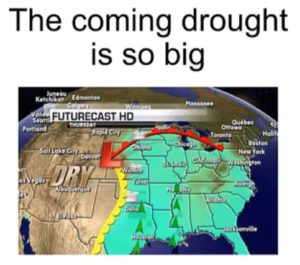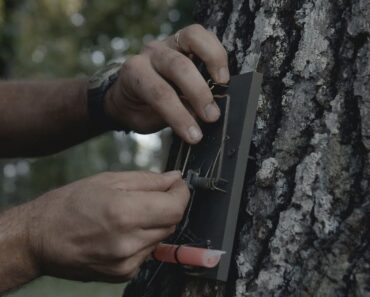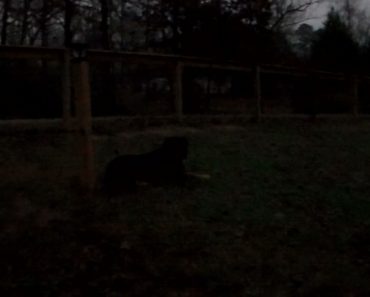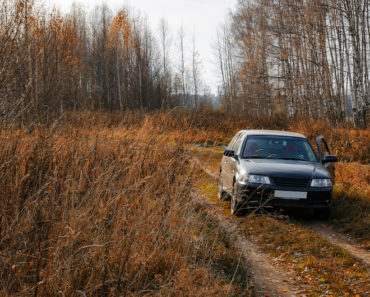Whenever we talk about wilderness survival in the prepping community, it tends to be set in the woods. But that only accounts for 44% of US lands.
Either there’s no need to have to survive in the rest of the country, or we’re missing some critical information that we need to consider. While wilderness survival scenarios in the woods, especially in the mountains, are essential, there are resources available there, which may not be available in other parts of the country. And it may not be possible to move from those areas to the woods all that easily.
Another 30% of North America is considered arid or semi-arid land, located in the southwest. I suppose you could avoid that part of the country, but not all of us can. We either live there or need to travel there for business or because we have family there.
Some of that land is sparsely enough populated that you can go nearly 100 miles between gas stations, let alone other signs of human habitation.
You’re not going to find many trees in that territory, and the trees you do find are likely to be small in stature, with twisted limbs. There’s no forest floor to gather leaves from to make a debris hut for shelter.
In some areas, there may not be anything bigger than a bush. Finding wood to build a fire falls somewhere between difficult and impossible. Nor is there a whole lot of water. The sun and the heat it generates become your number one enemy, one you can’t defeat, so you must do everything within your power to avoid.
But while the sun and heat are a severe problem during the daytime hours, the temperature can plummet 40 or 50 degrees when night falls. With so little to act as an insulation blanket, holding in the warmth of the day, it radiates quickly into the sky, leaving you shivering.
Yet, the risk of needing to survive in such a climate is very high. That heat is not only hard on us but on the vehicles that we drive. Dust storms can rise in some parts, totally blocking visibility. One could quickly drive off the road in those conditions, just like a blizzard. And just like going off the road in a blizzard, driving off the road means needing to survive until someone comes along to rescue you.
People have survived for centuries in this environment. If they can, we can too. All we need is the proper knowledge and strategy. Let’s look at some of the keys to survival in this climate.
Water
Water becomes your number one priority in these arid lands. I realize that we usually talk about shelter as the number one priority, but things flip-flop in this case. While the shelter is still essential, it’s a different sort of shelter and for various reasons. On the other hand, water has to be constantly in the forefront of your mind, as it is hard to find and your body is losing it more quickly than usual.
Of course, traveling in these lands without bringing water is foolish, seeing how scarce it is and how necessary it is for survival. Even so, it’s virtually impossible to carry along enough water for survival. Therefore, we’re going to have to find what water is available.
I’ve driven across Texas and New Mexico many times, often with people for whom it was the first time. The roads would cross small bridges across what was labeled “rivers,” but they would be quick to note that there was rarely any water in those rivers. Instead, they were arroyos, which only had water flowing down them from time to time when there were rains. Sometimes, those rains would be far away, either causing those streambeds to fill or even causing flash flooding.
Flash Flooding
Flash floods are always a risk, even when there isn’t a cloud in the sky. The soil in these arid lands has a high clay content, so water doesn’t soak in all that well. So it’s not like the flash flood goes away and then soaks into the ground. It’s much more likely to flow down to the nearest river, carrying logs and other debris along with it. The water and, even more so, the debris can cause considerable damage.
The only warning for most flash flooding in this territory is sound. The water will make a distinct rumbling sound as it travels down the watercourse. We’re unlikely to hear that in our cars, with the windows up, but if you’re out in the open, you’ll be able to hear it. If you do, head for high ground.
Of course, that’s also an excellent opportunity to gather water while it is there. But don’t count on a flash flood to supply you. You’re going to need to find water on your own. Where do you do that?
Finding Water
One nice thing about water in the wilderness is that it always leaves signs of its presence. Every living thing on the face of the Earth requires water. So all we need to do to find water is look for those living things or signs of them. There are three essential steps for finding water:
- Go Downhill – Water always flows downhill, so the more downhill we go, the more likely we will find a dry watercourse first, and then, following that watercourse, water. We may have to travel some distance to see it, but it will eventually be there.
- Look for Green – Plants need water to survive even more than humans and animals do. If you don’t believe me, just cut a flower and see how long it will survive out of water. So when you’re looking out over the landscape, look for the brightest patches of green, especially ones made by trees, rather than bushes. That’s where the water is most likely to be.
- Follow the Animals – Most animals need water daily and will not travel more than a day’s walk from it. Following animals or animal trails, especially as dusk approaches, is a sure way of finding water. Most animals will water at sunset, so there’s a narrow window of opportunity to utilize if you’re following animals rather than a game trail.
There is one exception to all this, that is in ranch lands. Ranchers often have to put down wells to get water for their livestock. So keep your eyes open for windmills, as those will be pumps bringing up underground water to fill water tanks for the livestock.
Whatever water you find will probably not look all that appealing and can be pretty muddy. Muddy water should be filtered through cloth to remove as much sediment as possible before running it through a water purification filter or boiling it to purify it. Muddy-looking water which has been boiled is safe to drink, even if it doesn’t look that way.
Dig a Seep
If you can’t find surface water even after following all that, you may need to dig a seep. Let’s say you find a dry watercourse with trees growing alongside it. There is likely to be water just a couple of feet below the surface, even if there isn’t any you can see.
The trick is to find where that water is most likely to be. Start by looking for the lowest point in that area, preferably forming a pool when it rains. Then look for either wet or dried mud. That’s the spot. Dig a two to three-foot deep hole there until you find damp dirt. Then sit back and allow the water to seep into the hole you just made. It will be muddy water, but it will be water.
Solar Stills and Water from Plants
What water exists in those arid lands is often caught in the ground or plants. So we have to extract it. One of the most common means of removing water from the environment isn’t a seep, and it’s a solar still. This also requires digging a hole but would be used someplace where a seep won’t work. The idea is to cover the hole with a piece of clear plastic, creating a solar oven underneath it. This will cause water to evaporate out of the ground, rising to encounter the plastic where it condensates. If a small stone is placed in the middle of the plastic, causing it to dip lower at that point, the water can drip off into a container placed in the hole.
Solar stills are a slow means of getting water out of the ground, so it’s usually best to use several simultaneously. It’s also a good idea to put leaves from plants in the holes, as the heat generated will also cause the moisture to evaporate out of those leaves so that they can be collected.
It’s commonly known that cacti can provide water as well. But getting that water may not be easy. The heavy, waxy skin of the cactus is intended to keep the moisture inside, even in hot weather. There are two things we can do. First, we can eat the inner “meat” of the cactus. Before trying that, burn the spines off the cactus to make it safer to handle.
The other option is to cut the cactus open and put it in the solar still. That will allow the moisture to evaporate and be collected by the still.
Shelter
We usually talk about shelter from wind, rain, snow, and cold when we talk about shelter. While there is always a possibility of wind and rain in these arid lands, and it can even snow and get cold, most of the time we need shelter for another reason, that is to protect us from the sun. That protection is important because it helps us to avoid losing water too fast through perspiration.
It can be five to ten degrees cooler in the shade than it is in direct sunlight. That’s significant when we’re trying to keep ourselves from sweating to the point of dehydration. If anything is likely to kill us in the climate, we’re talking about. It’s dehydration.
So the sort of shelter we’re looking for is more of a sunshade than anything else. But nature is not likely to be very cooperative with us, in that there are fewer trees use. Those trees that exist will be short, and there’s less likelihood of finding dead branches on the ground. Having a tarp of some sort, which can be tied to these low trees, makes it much easier to come up with a shelter.
If no tarp is available, then select the largest tree with the best branch density and use that as the basis of your shelter. Cut branches from other nearby trees and interweave them into the canopy of your base tree, expanding the shade and filling in any spots where the sun shines through. Remember that the sun will be traveling through the sky, so your shade will move.
I always carry both a tarp and a tent as part of my survival gear when traveling in arid lands. That way, I don’t have to count on finding tree branches to build a shelter. If I’m traveling by vehicle and have room, I might even carry some aluminum poles to make a sunshade with the tarp. And of course, I’ve always got plenty of paracord on hand.
Perhaps even more important than building that shelter is staying inside it. If you have to do anything outside, do it at night or very early in the morning, before the day heats up. This includes traveling. Unlike other survival situations, you’re better off walking at night and sleeping during the day.
Clothing
Clothing becomes an integral part of your shelter in these arid lands. It is easy to get sunburn with the sun beating down on you all day long. While it may seem counter-intuitive, wear long pants and long-sleeved shirts, not short ones, to protect you from the sun. Make sure those clothes are light-colored.
We’ve all seen pictures of Arabs in the desert, wearing long, flowing white robes. There are some excellent reasons for that attire. First, being white, they reflect the sun rather than absorbing it. That helps to keep the sun from heating them even more. Secondly, the layers of fabric act as insulation between them and the hotter air around them.
Usually, we wear clothing as insulation from the cold; but insulation works in both directions. If the ambient air temperature is hotter than your body temperature, using clothing to keep that heat out can be as useful as using it to keep heat in. Granted, with our body temperature being 98.6°F, you’re still going to be hot, but not as hot as 110°F.
Fire
Building a fire can be challenging when you can’t find fuel for the fire. While it probably won’t be necessary to build a fire to keep warm, that doesn’t mean we won’t need it for cooking food and purifying water. So I always carry a small stove, with fuel, that I can use for cooking. Specifically, I carry an Esbit stove with plenty of hexamine fuel tablets. That’s the most compact, lightweight stove I can find, and it can be used anywhere.
Getting Help
Finally, the chances are that you’re going to need some help if you find yourself caught in these arid lands with a vehicle that doesn’t run. Driving on a hot day puts extra strain on a car’s engine, especially on the cooling system. Many a traveler has had problems with their vehicle overheating while crossing a lonely stretch of road.
If your car breaks down on the road, the chances are that you can stay by your vehicle, with the hood up, until someone comes along and offers to give you a ride. But what if you can’t do that? What if your car went off the road, you broke down while four-wheeling in the backcountry, or for some other reason, you’re not where people can easily find you?
Chances are, if you’re in that sort of situation, you’re not going to have cellular signal to make a phone call. Even so, you might be able to get a text message through, so try that first. It might not work, but you’ve got to try first to find out.
Leaving modern electronics aside, your best means of communication in this situation is a signal mirror. There is little besides water and a few minerals, which will reflect sunlight. So when something does, it stands out. It’s also a means of communication which can travel a long distance, like 10 miles. With that kind of range, you can use it to signal people on the ground and attract the attention of pilots flying overhead.
Airplane pilots are trained to look for reflections of light like this and to report them. This will often lead to a flyover by a search-and-rescue plane at a lower altitude. If they see your reflection or some other sign of your presence, then a team will be sent in on the ground to find you.
One Final Point
As with any other survival situation, survival in arid lands depends a lot on being prepared. The big difference is that there will likely be less than you can scavenge from nature to further your survival. So your kit needs to take that into account. You’ll also need to carry a few different things, like the plastic to make solar stills, and then you’ll otherwise need. Be prepared, and you can survive in this environment like any other.




























